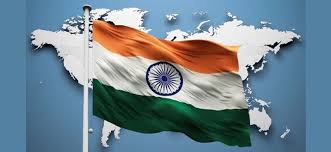
Navigating the Shifting Sands: The U.S.–India–Pakistan Triangular Dynamic and India’s Strategic Space
Navigating the Shifting Sands: The U.S.–India–Pakistan Triangular Dynamic and India’s Strategic Space
Introduction: A Strategic Triangle in Transition
For decades the strategic relationship among the United States, India, and Pakistan has been the fulcrum of South Asian geopolitics. From Cold-War rivalry and post-9/11 counter-terrorism cooperation to today’s multipolar order, each actor has pursued its own interests, creating a web of alliances, suspicions, and interventions. Since India’s Operation Sindoor and Washington’s renewed engagement with Islamabad, the traditional equilibrium has begun to tilt, testing India’s strategic autonomy and reshaping regional power balances.
Historical Roots of the Triangular Equation
The triangular dynamic emerged from the post--Second-World-War realignment. After the 1947 partition, Pakistan gravitated toward Western security pacts such as SEATO and CENTO, while India championed non-alignment. Throughout the Cold War, Pakistan served as a convenient U.S. frontline state—especially during the Soviet-Afghan conflict—whereas India deepened ties with Moscow, capped by the 1971 Indo-Soviet Treaty of Peace, Friendship and Cooperation.
Although occasional overtures were made, substantive U.S.–India cooperation remained limited until the Cold War ended. New Delhi’s 1998 nuclear tests initially strained ties but ultimately catalyzed deeper strategic dialogue. By the early 2000s Washington was increasingly viewing India as a counter-weight to China, a policy shift sometimes described as “de-hyphenation,” because the United States stopped treating India and Pakistan as co-equal poles.
The Trump Legacy and Subsequent Realignments
During President Trump’s tenure (2017-2021), U.S. foreign policy took on a more transactional flavor. Military assistance to Pakistan resumed—including a US $397 million F-16 sustainment package—while Islamabad was hailed as a “phenomenal partner.” Simultaneously, the administration deepened defense cooperation with India.
That legacy still reverberates. Washington’s post-2024 attempts to mediate after the April 2025 Pahalgam terror attack—and India’s retaliatory Operation Sindoor—illustrate the nuanced balancing act the United States now pursues: cultivating India to counter China, yet keeping Pakistan engaged for tactical and regional-stability reasons.
India’s Assertive Posture After Operation Sindoor
Over the past decade New Delhi has shifted from strategic restraint to proactive deterrence. Operation Sindoor—precision missile strikes deep inside Pakistani territory—marked a qualitative leap beyond earlier actions such as the 2016 Uri surgical strikes or the 2019 Balakot air raid. India’s evolving doctrine, informed by concepts like Cold Start, emphasizes rapid mobilization, Integrated Battle Groups (IBGs), and standoff firepower designed to punish without inviting uncontrolled escalation.
While India maintains its “no-first-use” nuclear pledge, its increasing reliance on swift conventional retaliation complicates Pakistan’s assumptions about escalation dominance.
Pakistan’s Strategy: Deterrence, Asymmetry, and Denial
Facing an enduring conventional imbalance, Pakistan relies on asymmetric warfare—including proxy groups—and a robust nuclear deterrent under its “full-spectrum” doctrine. Tactical nuclear weapons (TNWs) fill perceived gaps, creating strategic ambiguity. Islamabad frames cross-border terrorism as an internal insurgency, muddying the waters of international attribution, while consistently internationalizing the Kashmir dispute.
Domestically, chronic political instability, economic fragility, and radicalization threaten the very fabric of the state—an ironic by-product of policies once designed to ensure security.
IMF Loan After the Pahalgam Attack: A Diplomatic Undercurrent
In June 2025 the International Monetary Fund approved a new US $1.1 billion tranche for Pakistan—just weeks after the Pahalgam attack that killed more than forty Indians. New Delhi privately bristled, seeing the timing as a reward for a state that sponsors cross-border terrorism. The IMF insisted the decision was grounded in macro-economic metrics, yet the U.S.—which wields significant influence within the Fund—did not oppose the loan, revealing a preference for Pakistan’s economic stability over India’s immediate security concerns.
Indian officials avoided overt criticism of the IMF but warned that global institutions must not ignore terror-financing risks. Many analysts believe Washington sought to keep Islamabad solvent—both to temper China’s leverage under CPEC-related debt and to preserve U.S. influence. The episode again highlights the divergence between India’s security-centric perception of Pakistan and the West’s stability-oriented approach.
The China Variable: A Lengthening Shadow
China’s growing footprint has turned the U.S.–India–Pakistan triangle into a quadrilateral reality. The China-Pakistan Economic Corridor (CPEC)—part of Beijing’s Belt and Road Initiative—runs through territory India claims, aggravating Sino-Indian tensions. Chinese investment, arms transfers, and diplomatic cover embolden Islamabad and present New Delhi with the real prospect of a two-front challenge.
Beijing’s confidence after the 2025 Ladakh flare-up, where Chinese-origin systems reportedly performed well, has spurred India to diversify suppliers and accelerate modernization.
Strategic Implications and India’s Emerging Doctrine
India’s strategic space is simultaneously expanding and constrained. It enjoys unprecedented diplomatic reach, closer U.S. and Quad partnerships, and a technologically advancing military. Yet it confronts a volatile Pakistan-China nexus and persistent terrorist threats.
Operation Sindoor underscored both the value and the limitations of supplier diversification: U.S. reluctance to provide platforms such as the F-35 persists, whereas Russian and indigenously produced systems proved decisive. New Delhi will likely double down on a multi-vendor procurement strategy, Atmanirbhar (Bharat-made) defense initiatives, and deeper technology collaborations with trusted partners.
Diplomatically, India steadfastly rejects third-party mediation on Kashmir, preferring bilateral mechanisms while remaining an active player on global issues—maritime security, counter-terrorism, critical technologies, and climate action—where cooperation with Washington and like-minded partners is expanding.
Conclusion: Realigning in a Fluid Geopolitical Landscape
The U.S.–India–Pakistan triangle remains fluid, its angles continually reshaped by history, strategic necessity, and emerging threats. Washington’s partnership with New Delhi is deepening, yet tactical ties with Islamabad endure. India, confronted by Chinese encirclement and Pakistani hostility, must pursue calibrated assertiveness, pragmatic alliances, and rapid technological modernization.
Decisions taken today in New Delhi, Islamabad, and Washington will determine not only South Asia’s stability but also India’s trajectory as a leading global power. The triangle endures—but its geometry is anything but fixed.